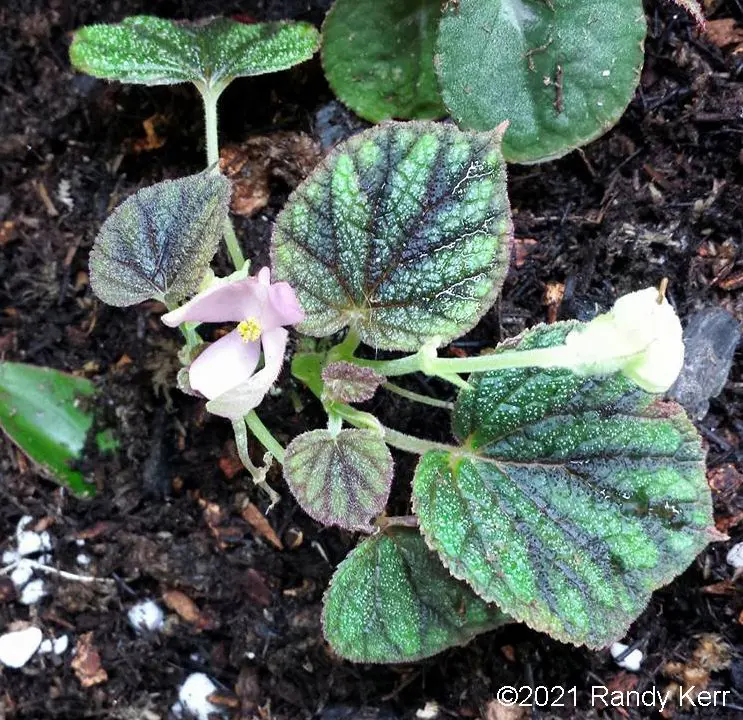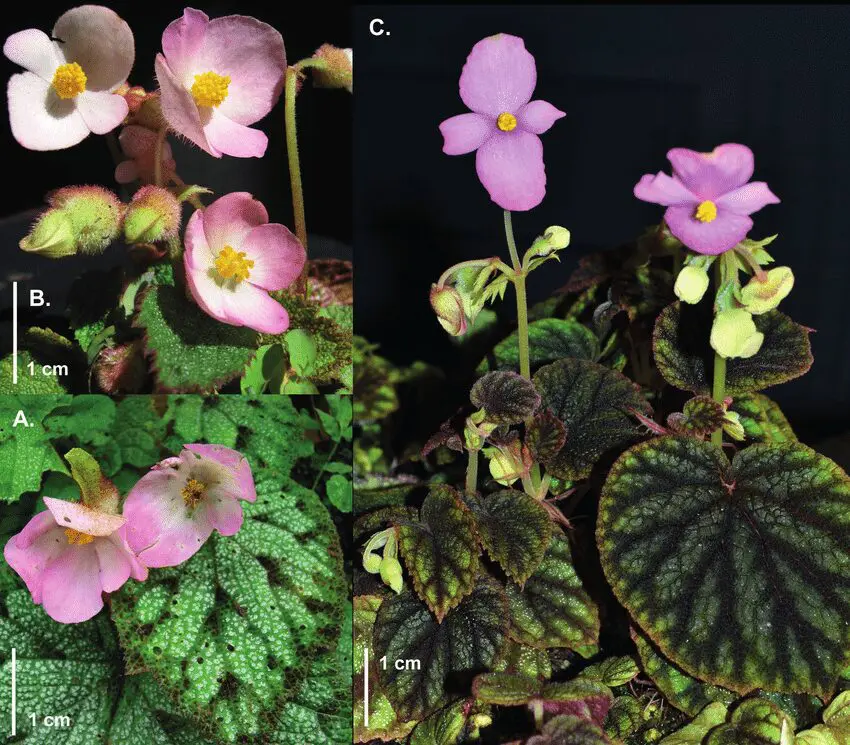Begonia picta is a tuberous species that was discovered in the high Himalayan foothills. It was published in 1807, making it one the earliest published begonias in any of the groups. The Thompsons, in their BEGONIAS: A Complete Reference Guide classify B. picta as a low-growing species. There are other tuberous species (like B. cinnabarina and B. pearcei) in the low-growing group which come from the higher altitudes of the Andes. We grow these with relative ease and they are the parents of the showy tuberhybrida group.
B. picta is not part of this group. Instead, it is a member of a group of tuberous species from the Indian Ocean basin area which require higher humidity for successful culture. B. picta usually grows on shady banks and rock ledges in wet areas.
The plant has fragrant flowers that are pale rose and can, under lights, bloom until dormant. They are are monoecious (individual flowers are either male or female, but both sexes can be found on the same plant).
B. picta | Photo Credit: Images A & B courtesy of Sangeeta Rajbhandary, image C courtesy of Darrin Norton.
I have heard that the plant can be finicky in that, once dormant, it may not re-sprout. That was my experience the one time I had the opportunity to grow it. It needs terrarium culture, preferably with temperatures below 70°F.
The foliage looks pustular (meaning it is covered with minute elevations giving it a fine pebbly look). Its color can be variable from a solid medium green to being patterned with brown to varying degrees.
In India, the leaves and stems are eaten raw or cooked. The Nepalese call the plant makkarkajay and prepare a tongue tingling sour chutney out of the succulent stems and peduncles.
Seed propagation is by surface sowing and keeping the seeds moist under lights. The seed can be very slow to germinate, sometimes taking a year or more. New plants can be started by taking basal cuttings from tubers in spring.



